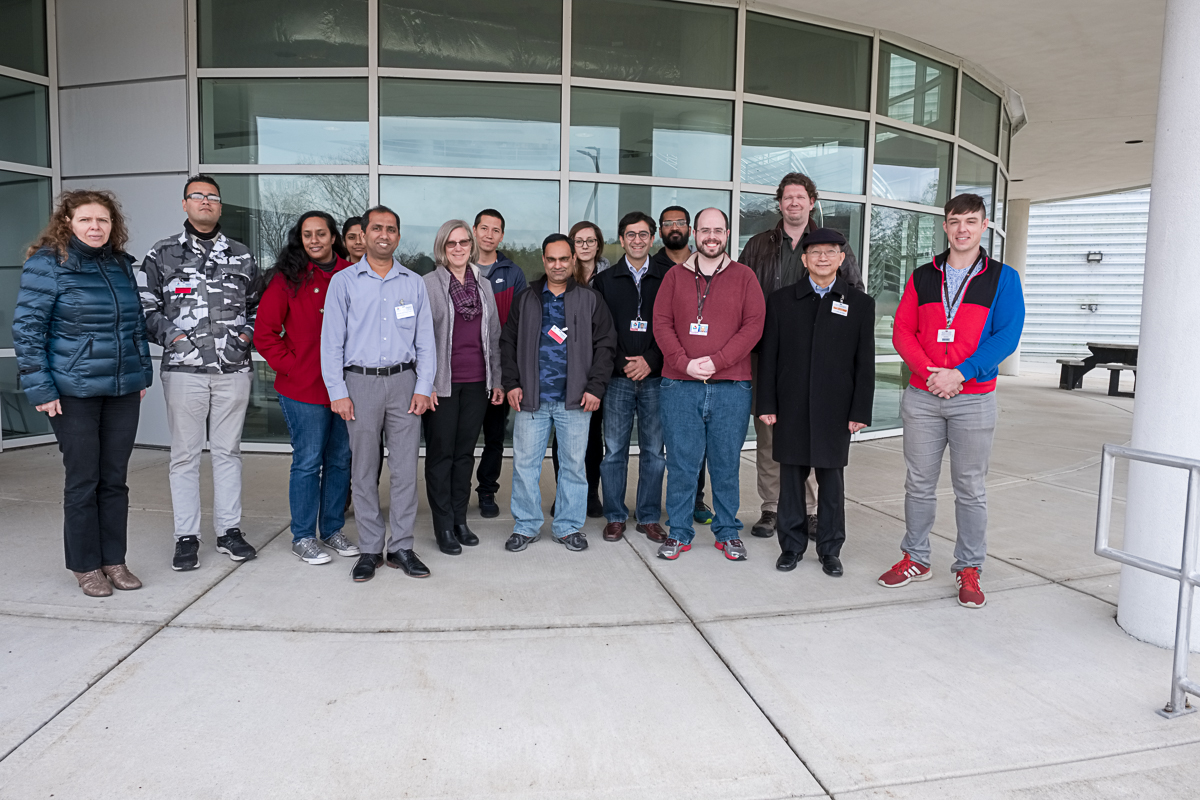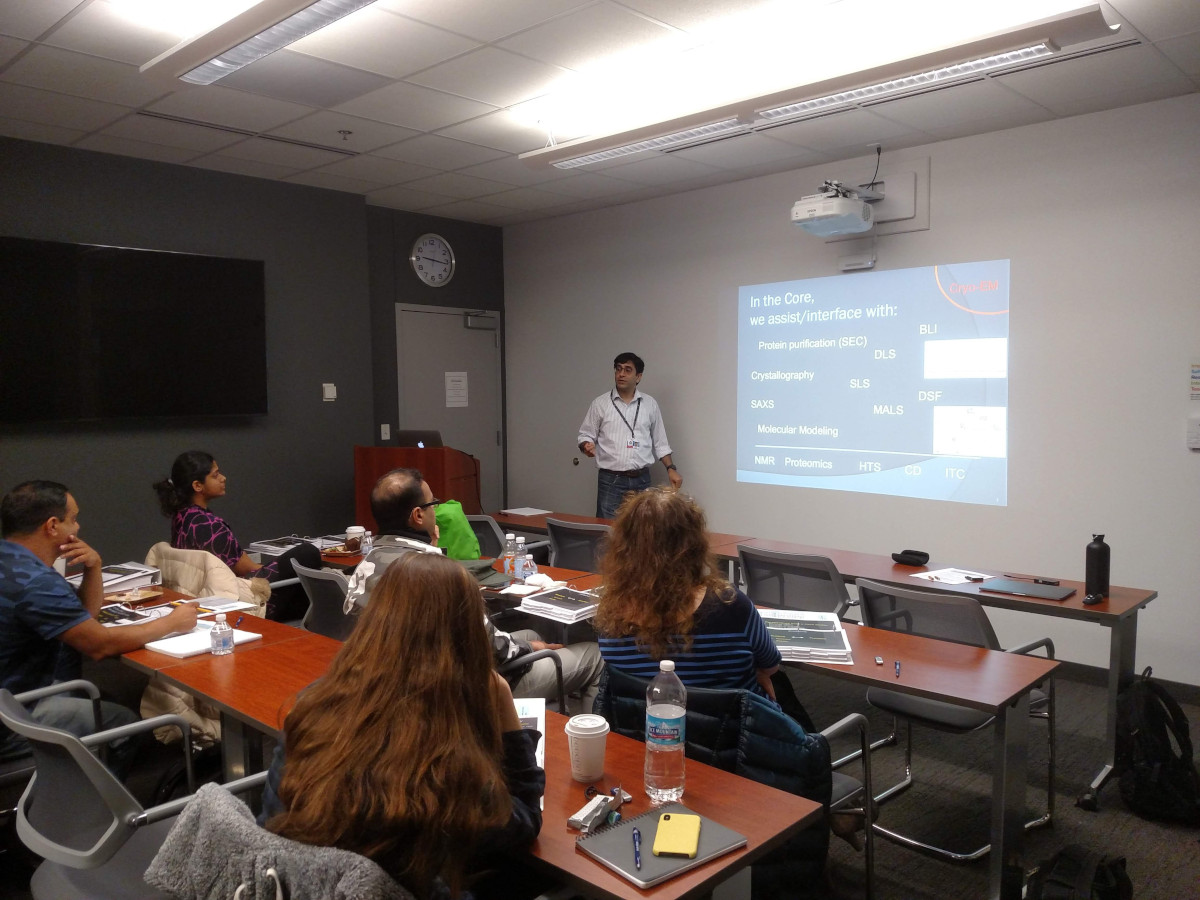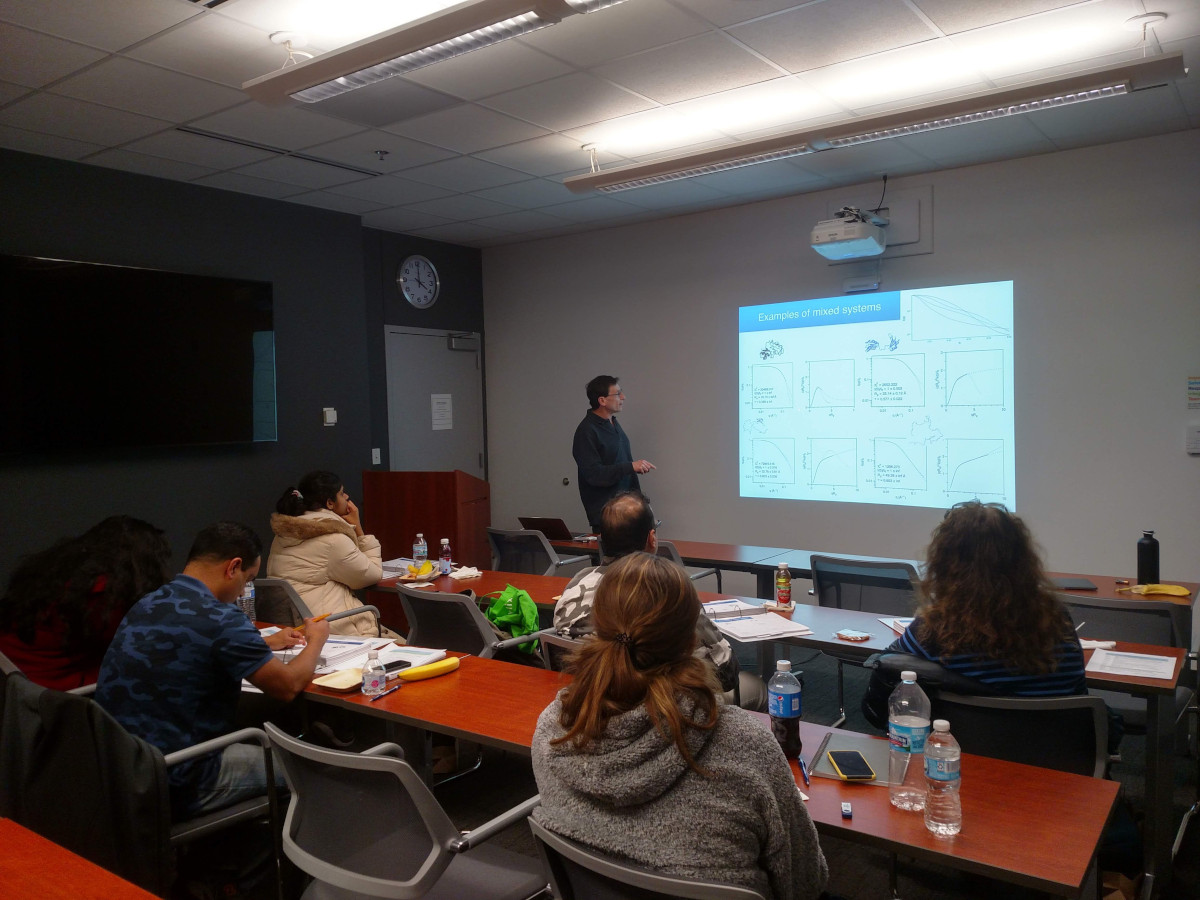
BioCAT held its fourth annual BioSAXS training course from 11/5/18-11/7/18. There were 11 participants and 6 instructors. Day one started off with breakfast, followed by an excellent overview of the basic physics of SAXS and what kind of information you can obtain from the technique by Dr. Xiaobing Zuo (12ID, APS). This was followed by two talks from Dr. Lokesh Gakhar (Iowa State) going over the extremely important and sometimes overlooked steps of how to actually plan and perform SAXS experiments. He covered everything from planning what data you want to collect to sample preparation for the experiment, to recommended notes you should take while at the beamline. Following that Dr. Srinivas Chakravarthy (BioCAT) gave a short talk about how to get beamtime at BioCAT.
After a short break, Dr. Jesse Hopkins (BioCAT) gave a set of lectures, broken up by lunch, covering the details on what a scattering profile is, basic SAXS data analysis and validation, and advanced SAXS data analysis. This covered everything from getting an Rg to doing SEC-SAXS deconvolution and making envelopes. He finished by giving a talk about best practices for publishing SAXS data.
The rest of the afternoon of day 1 was devoted to illustrating advanced topics, to give students and idea of how SAXS can address challenging research questions. Dr. Chakravarthy gave a pair of talks, the first discussing time resolved SAXS and how and what you can do with the technique at BioCAT. The second focused on using SAXS data to extract information on mixtures and complexes. There was an excellent talk by Dr. Wei-Jen Tang (University of Chicago) on his use of equilibrium and time resolved SAXS as complementary to cryoEM and crystallography to study human insulin degrading enzyme. The day finished with a talk from Dr. Tobin Sosnick (University of Chicago) on how to use SAXS to study flexible systems, with a particular focus on his study of intrinsically disordered proteins.
Day two started off with a brief introduction to BioXTAS RAW, the data processing software used at the BioCAT beamline (and developed and maintained in-house). Then students spent the rest of the day working through detailed self-guided tutorials that took them from basic SAXS data processing and validation through three dimensional reconstructions. In the afternoon, students started data collection using the SEC-SAXS instrumentation at the BioCAT beamline.
Day three was focused on data collection at the beamline, with the rest of the students having a chance to run either their own samples or standards that BioCAT scientists had prepared for them. There was also help provided for data analysis of their first SAXS experiments.


